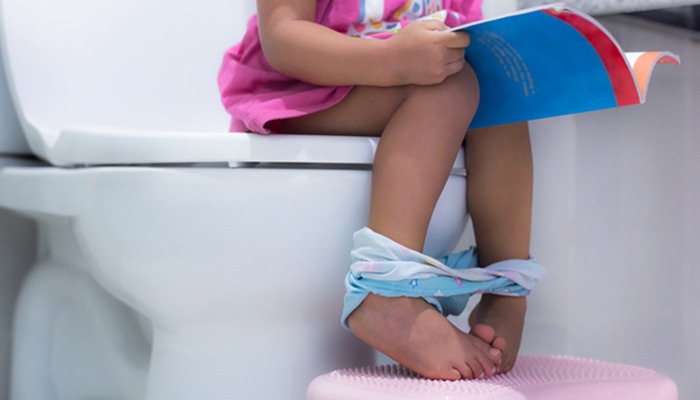For toddlers and young children, learning how to use the toilet on their own is one of their first leaps towards independence.
Before potty-training, that child is completely reliant on their parent to meet every single one of their needs. Sure, they may climb on the counter to get their sippy cup, displaying some self-sufficiency, but the ability to identify the need to go to the bathroom, hold it until they get there, and complete the routine themselves is a socially significant behavior that is the gateway to children’s autonomy.
For parents and caregivers, teaching how to use the toilet is one of the most daunting and tedious tasks they can imagine.
Many parents make the extremely common mistake of attempting to potty train their child on an intermittent schedule due to the complexities and frustrations that come from even just a day of trying. Those complexities can range from other young children in the house demanding attention, full-time or part-time jobs, or a toddler who is resistant to training and engaging in challenging behaviors.
These factors often times draw parents away from potty training, or bring them to a quick halt when they barely got started.
Yes, potty training difficult. Fighting with a toddler is a challenge. Pouring all attention into following a consistent schedule is time-consuming. However, the more consistent the caregiver can be with the child, the more successful that child will be on using the toilet, and quicker, too.
Choose a free weekend
In order to remain consistent, it is best to potty-train when you have a few days to be home and remain on track with the schedule. A long, 3-day weekend would be ideal. However, that is not always possible. If you can only do Saturday and Sunday, then it is important on Monday when you drop that kid off with the babysitter or caregiver, you give them a run-down of his current schedule and ensure that they do their best to stick with it as well. If it is a daycare, it very well may be impossible for them to stick to the schedule you were on at home. Talk about that with them and figure out how often, realistically, they can take him to the bathroom. Then adjust your plans from there. Adjustments may mean they keep him in a pull-up for the morning but then put him in underwear for the afternoon when they have more free-time to monitor him and make more bathroom trips.
Bathroom set-up
It is beneficial to set the bathroom up to be a comfortable and fun space for the child. If they are extremely resistant to the idea of sitting on the toilet, make the room motivating for them. They will be spending time just sitting on the toilet, so it is helpful to have books, coloring books, iPad time, or anything they enjoy doing readily available in the bathroom.
Choose small rewards
Stickers, stamps, small candy or treats, any small item or toys that you know your child likes will work for this step. The reason that these need to be small is because you are hoping to be rewarding often. You don’t want to promise your child a new puzzle each time he pees on the toilet. That could be five puzzles a day if the child so chooses. These rewards will be given each time they are successful on the toilet. I would recommend giving your child a slightly larger reward for successful bowel movements, however, because that skill is more challenging than voiding on the toilet. These rewards must be withheld at all other times. Depriving the child of that item at other times will increase their motivation for it. If their motivation increases, they are more likely to run to the bathroom to pee on the toilet in order to earn that Starburst.
Stick to a schedule
Use your child’s current toileting schedule to first determine how often you will be transitioning to a bathroom trip. If your child’s diaper is typically wet every hour and a half, take them to the bathroom every hour to have more opportunity for success. Once you decide on a schedule, remember to be consistent. Set timers for yourself, and them, as a reminder. You also should choose how long you want your child to sit on the toilet as they make the attempt to be successful. I recommend 5-10 minutes on the toilet, preferably with a fun activity like a video or book. If they are successful at any point, allow them to end their sitting time immediately, give them lots of praise and the predetermined reward.
Out-stubborn your child
Always follow through with what you say. The moment you waver, they sense your weakness and they take advantage. If you say they only get Starbursts when they use the toilet, it is essential to stick to those words until your dying day. Giving them Starbursts after you put that contingency in place just because they are kicking and screaming on the floor will only reinforce kicking and screaming on the floor to get their way. Out-stubborn them.
Finally, accidents happen. They will happen frequently. Do not get frustrated with yourself or your child in these situations, and do not punish them when accidents occur. Instead, use it as a teaching moment. Speak softly and casually to your child rather than scolding them. Transition them into the bathroom for a seated session to, again, model what they are supposed to do when they feel the need to use the bathroom.
Potty-training is a challenge, but for your child, it is a necessary step towards the transition from a needy toddler to a self-sufficient young child. Be patient, kind, and follow through and you will be successful in providing your child with the tools required to meet their own needs.

